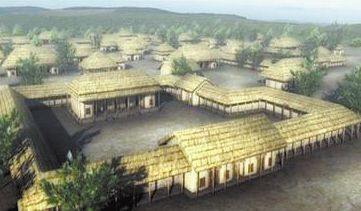The Architecture in the Xia Dynasty
2 min readThe architecture in the Xia Dynasty went to two extremes: common people still lived in the sheds partially embedded into the ground or shanties on the ground as narrow as about six to ten square meters, dingy and damp. Such sheds and shanties represented the worst living conditions according to the archeological findings to date. Better than these were the medium-sized buildings on the ground or the rectangular buildings on the half-a-meter-high terrace which were partitioned into afew rooms with their total floor space ranging from dozens to about a hundred square meters.

The most impressive architecture was the large-scale palace complex. At the Erlitou site was discovered a large palace complex boasting an orderly layout of fine symmetry with the main building standing in the center of the northern section. The central line of the complex from the South to the North is in the same direction with the direct sunrays. Obviously under an all-round plan was the whole complex built up with its floor space amounting to 80,000 square meters. Besides the main building, skirt buildings were built up. The whole complex sits on the terrace over half a meter high. Palace No.1 is square and it consists of the main hall, the middle hall, doorways, side houses and galleries with the main hall south-oriented and congruent with the southern gate and the chambers on either side. In the middleis a 5,000-square-meter courtyard encircled with cloisters. Similar to Palace No.1, Palace No.2 is also south-oriented with the gate, the middle hall and the temple in a line while the corridor houses on both sides are in symmetry. The main buildings and the supplementary structures such as the corridor houses stand at different heights, but forming a harmonious picture.

The grand palatial architecture site at Erlitou reflected that the building techniques had made headway in that period and people were capable of building up the large-scale palace complex. The fabulous palaces ornately decorated symbolic of the dignity and majesty of the king tells what luxury those rulers enjoyed in those days simply because of their immense power. The king in the Xia dynasty availed him of the grandeur and magnificence of the palace complex to magnify his power and asserted his peerless position.









